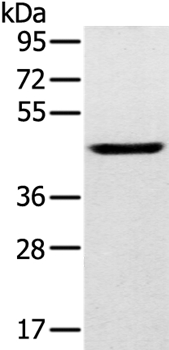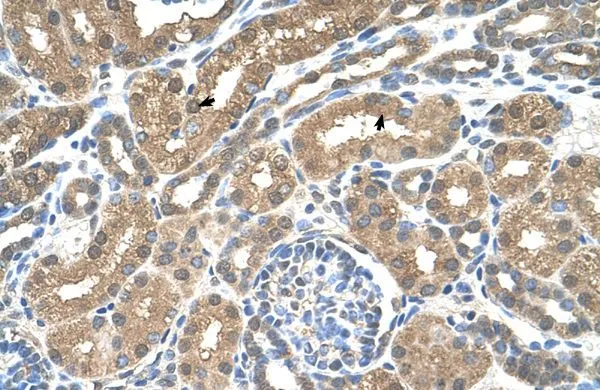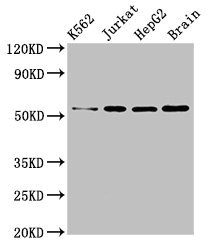Rabbit anti Human Monocarboxylate Transporter 3 (MCT3)
X2362P
ApplicationsWestern Blot
Product group Antibodies
ReactivityHuman
TargetSLC16A8
Overview
- SupplierNordic-MUbio
- Product NameRabbit anti Human Monocarboxylate Transporter 3 (MCT3)
- Delivery Days Customer7
- Application Supplier NoteAntibody can be used for Western blotting (1-5 microg/ml starting dilution). Optimal concentration should be evaluated by serial dilutions.
- ApplicationsWestern Blot
- Applications SupplierWestern Blotting;Western Blotting
- CertificationResearch Use Only
- ClonalityPolyclonal
- ConjugateUnconjugated
- Gene ID23539
- Target nameSLC16A8
- Target descriptionsolute carrier family 16 member 8
- Target synonymsMCT3, REMP, monocarboxylate transporter 3, MCT 3, solute carrier 16 (monocarboxylic acid transporters), member 8, solute carrier family 16 (monocarboxylate transporter), member 8, solute carrier family 16, member 8 (monocarboxylic acid transporter 3)
- HostRabbit
- Protein IDO95907
- Protein NameMonocarboxylate transporter 3
- Scientific DescriptionSolute carrier family 16 member 8; MCT3; SLC16A8
- Shelf life instructionSee expiration date on vial
- ReactivityHuman
- Reactivity SupplierHuman
- Reactivity Supplier NoteSynthetic peptide derived from MCT3 protein.
- UNSPSC12352203






